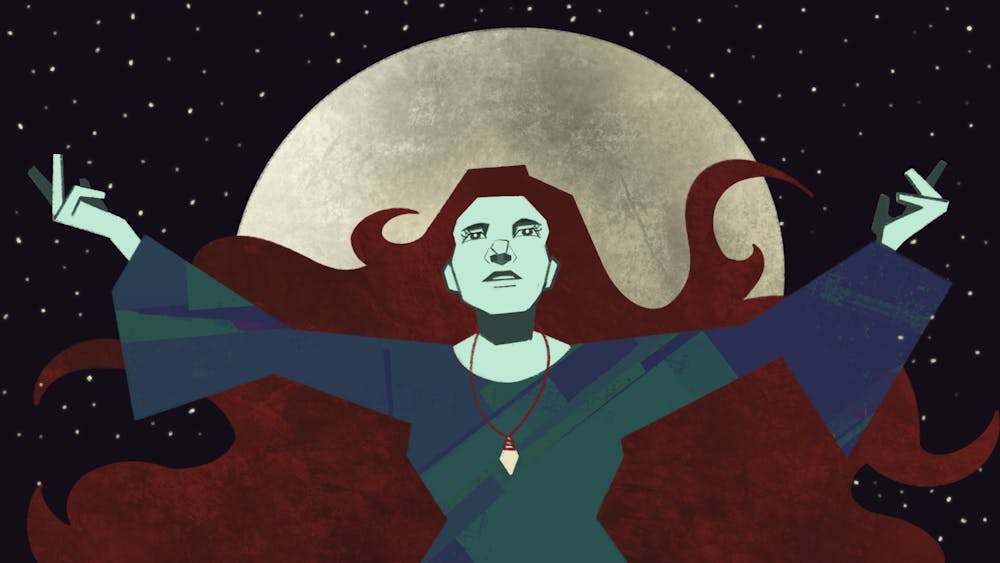Witches exist in more than just legends and fairytales. From Ghana to Romania to your hometown, witches are everywhere. A new wave of witches is emerging thanks to the internet and various social media platforms like TikTok. But what exactly is a witch?
Witches are broadly known as people engaged in the occult who possess supernatural powers that allow them to cast spells and create potions for various purposes. It's often used in association with vaguely related terms like Wicca. To the uninformed, these terms are used interchangeably because they all broadly fall under the umbrella of supernatural magic.
However, each term is nuanced and carries a long history. For instance, Wicca is a modern western Pagan religion. Wiccans are typically duotheistic, meaning that they broadly worship a goddess and a god. They also have a deep reverence for nature and practice witchcraft. While Wicca is considered a religion, witchcraft isn't necessarily viewed as a religion in itself. Some view it as a practice similar to how meditation is perceived.
Margaret* (C ‘24) is a practicing witch at Penn. They prefer to remain anonymous for fear of intense family backlash and scrutiny.
“[Witchcraft] is so personal to each person. You can design your own practice. [Broadly speaking,] it’s the idea that we are all souls that come from the universe. And when you come to Earth, you take the form of a physical body and go on a specific journey. The purpose of this experience is to raise your vibrational awareness and learn certain lessons. It’s really based on harmony with the earth,” says Margaret.
The path to practicing witchcraft is unique for everyone and often entails many twists and turns along the way. Margaret got their start by exploring different religions and spiritualities.
“I knew I needed a change and during the pandemic, I had a spiritual awakening for me. I knew I was going to leave for college soon and finally be able to leave the church that my parents were in and do my own thing. I would scour the internet looking for any kind of religious or spiritual guidance that I hadn't been exposed to growing up … Eventually, I settled on witchcraft,” says Margaret.
There are many avenues for young people to explore spirituality and learn about witchcraft. On YouTube and TikTok there are communities of witches that introduce outsiders to their practice that aim to break down stereotypes and foster a welcoming environment.
For instance, YouTubers like Annabel Margaret, also known as The Green Witch, are down–to–earth and inviting to all. Rather than embodying the stereotype of a witch, she’s more similar to your typical girl next door.
On TikTok, there’s a host of creators welcoming those intrigued by witchcraft to join. The #WitchTok has over 25.7 billion views as of April 2022 and it’s only getting bigger. It’s the perfect source for curious individuals to get short, low–stakes, and informative content to answer their questions.
Margaret says, "TikTok is good because I can scroll through and see people doing tarot readings on live streams. It's easy to tell who's an inexperienced witch and [who's] starting out. [I like the TikToker] divineSunflowerducky. She has a really good community, and I'm friends with a few of her other followers.”
In the TikTok communities, new witches can actively learn from others and experience spiritual downloads, also known as a miniature spiritual awakening. In these communities, new witches are supported and guided to exit the aptly named broom closet.
For many new witches, the fear of being outcast by society and potential backlash from family prevents them from fully embracing their identity. This is partially because American cultural norms dictate that witches are a perversion of the Judeo—Christian concept of divine femininity.
For example, one of the most venerated women in Christianity is the Virgin Mary, also known as the mother of Jesus Christ. In pop culture, Mary is everything that a stereotypical witch is not. Mary is often depicted as attractive, pure, and kind. She gains proximity to divinity because of her upstanding character, but doesn’t actually have the power to make something supernatural occur.
In contrast, witches are depicted as ugly, untrustworthy, evil, and cold, demonstrated by the popular phrase "colder than a witch's tit." Overall, witches are viewed as devilish creatures, as anyone outside of the Judeo–Christian morality is often assumed to be colluding with the devil.
Margaret says, “[My parents] don’t know that I practice. They still think that I believe all their [Christian] beliefs … When my sister wanted to leave [Christianity], they kicked her out of the house. I don’t want to repeat that.”
Understandably, many witches choose to avoid direct conflict and only practice among those they feel safe and comfortable with.
“I love doing cleansing spells for my friends. [I primarily] use crystals, essential oils, and sigils. If my friends are feeling really overwhelmed or they just have a lot going on in their mind, I like to cleanse them and make them feel better,” says Margaret.
As long as one treats a witch with common decency, chances are they will receive the same respect and civility, because witches—no matter how many "scary" spells they cast—are people, too.
According to Margaret, contrary to popular belief, witchcraft is rooted in love and growth. She explains, “I really wish that people knew that the majority of witches are coming from a positive light and really want to help people and bring comfort to people. The whole point of practicing witchcraft is to raise the vibration of the world around you and bring more love and peace into it."







